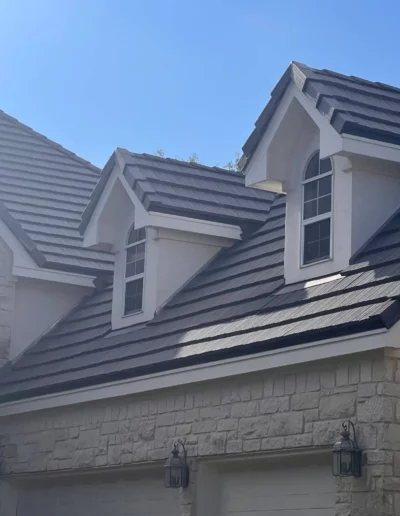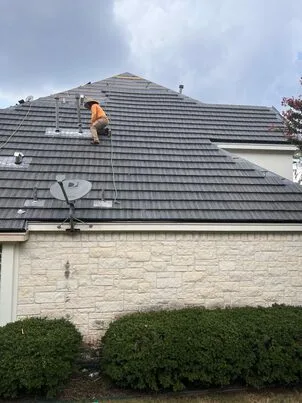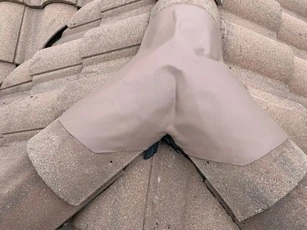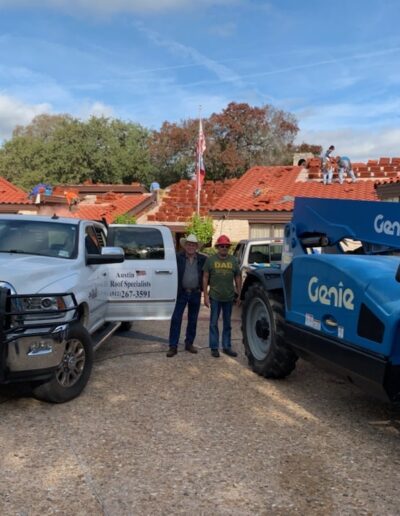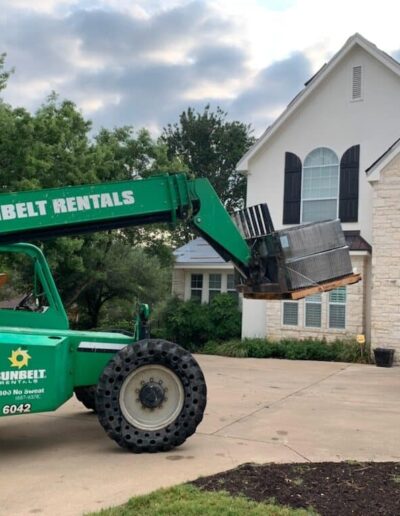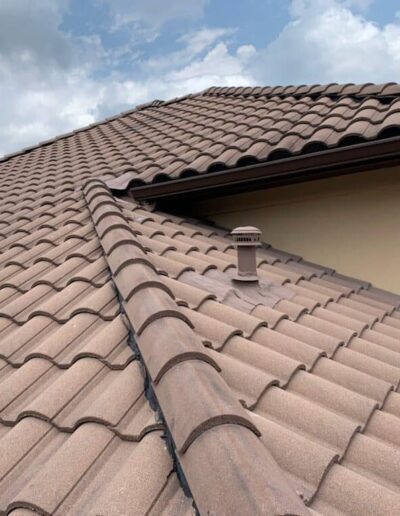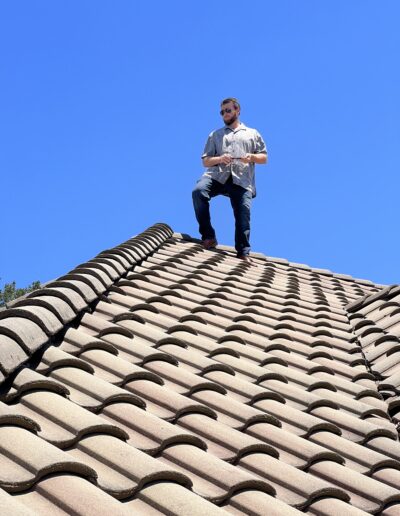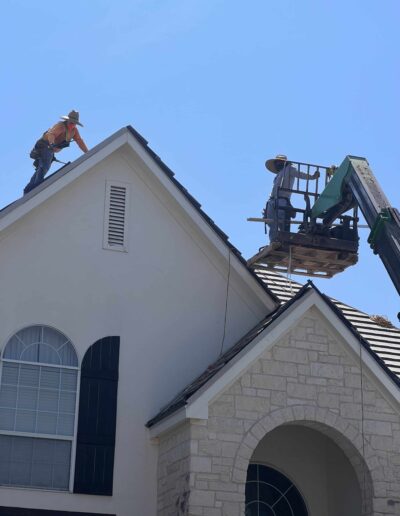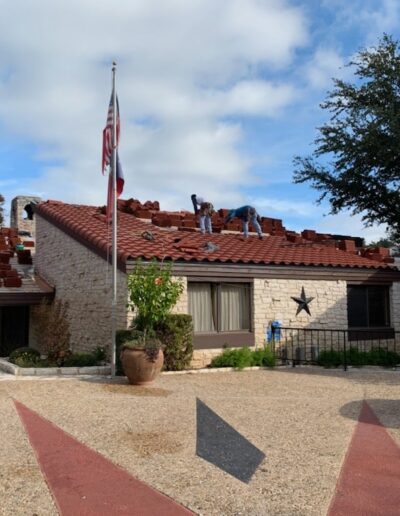Cedar Park, Texas
Roof Repair & Roof Replacement in Cedar Park, Texas
HAIL DAMAGE REPAIR & ROOFING INSURANCE CLAIMS IN CEDAR PARK, TEXAS
Here’s how a roofing insurance claim is usually processed:
- Please get in touch with your insurance company to report the damage and request a claim.
- After filing a claim, an insurance adjuster will be assigned to examine the damage and determine the cost of necessary repairs or replacements.
- If the adjuster asks for documentation, please provide them with any estimates from Your Roof Specialist.
- The insurance company will determine the coverage and payment amount for the claim.
- After your claim has been approved, you can repair or replace the damaged item and submit the corresponding bills to the insurance company for reimbursement.
Please be aware that the steps and procedures involved may differ based on your insurance provider and the type of policy you have. To ensure you’re prepared, it’s wise to review your policy, grasp what damages are included, and familiarize yourself with the steps for submitting a claim.
When should I replace the roof on my home?
The lifespan of your roof depends on its type and current condition. Typically, asphalt shingles need replacement every 15-20 years, while metal roofs can last up to 50 years. For a better understanding of your roof’s condition, it is advisable to get an evaluation from a qualified roofer.

How to Decide Which Type of Roofing is Right for My Home in Cedar Park, Texas?
To determine the most suitable roofing for your home in Austin, consider its climate, budget, and style. Austin’s hot and humid weather calls for a roofing material that is durable enough to endure extreme temperatures. When choosing a roofing material, it is crucial to consider your home’s budget and style. For instance, a shingle roof might be the most suitable choice if you have a traditional-style home. Regarding roofing materials, a metal roof could be an excellent choice for those with a modern home. Your decision on the best roofing material for your Austin home should ultimately be based on your specific needs and personal preferences.
How do I know if I need to repair my roof?
If you observe any damage to your roof, such as absent or cracked shingles or watermarks on your ceiling, you will probably need to repair it. It is advisable to have a professional inspect your roof if it is over 20 years old to check for any necessary repairs.
Why You Need A Professional Roofer for Your Home Repair?
Hiring a professional roofer can guarantee that your home repair is carried out with the necessary expertise and experience while keeping safety a top priority. They can offer guidance on selecting the most appropriate materials and methods for your roofing project’s specific needs.
what to expect when Installing a New Roof On Your Cedar Park, Texas Home
When installing a new roof on your home, you can expect to have a professional roofer inspect the existing roof, remove the old roofing materials, install new roofing materials, and inspect the new roof for any potential problems. You may also need to examine the roof by a building inspector to ensure it meets local building codes.
Typical roofing materials used in Cedar Park, Texas
The most frequently used roofing materials in Austin, Texas, include asphalt shingles, metal roofing, clay tiles, and slate.
Information About Roofing Systems & Materials
Roofing materials and systems are utilized to shield a building from the weather. Popular roofing materials include asphalt shingles, metal, wood, slate, and tile. Asphalt shingles are a popular roofing material because they are affordable and durable. One of the reasons why metal roofing is popular is because it lasts a long time and is resistant to fire and wind. While wood shingles and shakes are popular, they require more maintenance than other materials. On the other hand, slate, and tile may be more expensive, but they are highly durable and can last for decades.
Here are some tips for the hail damage repair process:
- Document the damage: We recommend that you take pictures of the damaged areas, such as the roof and gutters of your property, to assist with your insurance claim and allow contractors to assess the damage.
- Check for contractor credentials: If you want to make sure that the work is done correctly, it’s crucial to hire contractors who are licensed, insured, and have a good track record. You can confirm this information by checking with the Better Business Bureau or requesting references from the contractor.
- Understand your insurance coverage: Before beginning any repairs, it is crucial to understand your insurance coverage and the covered damages. Take the time to carefully review your policy and contact your insurance provider if you have any questions or concerns.
- Keep records and receipts: It’s essential to record all repairs made, along with any permits, invoices, or other related documents. These records can come in handy in case of any disputes with your insurance company.
- Be aware of the weather: If the hail damage is significant, it is crucial to repair it promptly. However, it is essential to be mindful of the weather conditions and wait for favorable conditions to prevent further damage.
- Quality of work: When hiring a contractor for repairs, it’s vital to ensure they use high-quality materials and complete the job to the highest standards. This will improve the appearance of your roof and protect your property from future damage.
What are the benefits of routine residential roof maintenance?
Routine residential roof maintenance can provide several benefits, including:
- Prolonged Roof Life: Taking care of regular maintenance and repairs for your residential roof can significantly extend its lifespan. By detecting and addressing minor issues before they escalate into more significant problems, you can save yourself from expensive repairs in the future.
- Energy Efficiency: By keeping your roof in good condition, you can ensure that the insulation and ventilation systems function correctly, reducing energy costs. This can save you money on heating and cooling expenses in the future.
- Safety: Regular maintenance on your property is vital to identify and address potential safety hazards. Loose or missing shingles, for example, could pose a safety threat and result in accidents or injuries.
- Protection of Building structure and assets: Regular maintenance can prevent water damage to the building’s structure and supports, which may lead to mold, rot, and other serious issues.
- Preventing Leaks: Residential buildings and their belongings are at risk from leaking roofs. It’s essential to regularly maintain roofs to detect and fix leaks before they cause significant damage.
- Aesthetics: Performing routine maintenance on the roof can maintain its aesthetic appeal and improve the overall appearance of the building. A visually appealing roof can boost the property’s curb appeal, increasing its market value.
- Compliance: Some maintenance is necessary for most residential roofing systems to meet the standards set by manufacturers’ warranties, building codes, and insurance requirements.
- Cost-effective: Maintenance can be cost-effective in the long term as it helps detect and resolve issues before they become significant and expensive repairs.
- Early Detection of Problems: Regular maintenance can be beneficial. It has the potential to detect problems early on, allowing for timely repairs and preventing minor issues from snowballing into more significant and costly ones.
- Warranty Protection: It is highly recommended to perform routine maintenance on your roofing materials by the manufacturer’s instructions, as this is often a requirement to maintain the warranty. Neglecting this critical step may, unfortunately, result in the warranty becoming void, which could leave you responsible for the cost of any necessary repairs or replacements.
What are the differences between 3-tab and architectural Shingles?
The primary distinction between 3-tab and architectural shingles lies in their visual appeal. Regarding roofing, 3-tab shingles are flatter and more even, while architectural shingles are thicker and have more depth. Additionally, architectural shingles tend to last longer and are more durable against wind and severe weather.
Pros and cons of asphalt shingles
Pros
- Asphalt shingles are a great option if you’re looking for a cost-effective roofing material.
- Asphalt shingles are easy to install and maintain.
- You can choose from a range of colors and styles for your asphalt shingles, which will help you personalize the appearance of your roof.
- Proper maintenance ensures that asphalt shingles are durable and can last up to 30 years.
Cons
- Roofing materials like metal or tile are more durable than asphalt shingles.
- Hail and high winds can cause damage to asphalt shingles.
- Compared to other roofing materials, the installation cost of asphalt shingles may be higher.
- Repairing asphalt shingles may present more difficulty than other roofing materials.
HOW DO I KNOW IF I NEED A ROOF REPLACEMENT?
Knowing when to replace your roof is vital to avoid spending unnecessary money. Various signs indicate when it’s necessary to replace your roof. The first sign is age. A roof’s lifespan typically ranges from 20 to 25 years, depending on the type of material utilized. If your roof is over a certain age, consider replacing it.
If you observe any missing, cracked, or curling shingles, it could be a sign that you need to replace your roof. Similarly, any water damage or mold in your attic could indicate that your roof leaks and needs immediate replacement. It’s a good idea to check your roof for any signs of wear and tear. Replacing your roof may be necessary if you see loose nails, rust, or other damage indications.
If you observe any sagging or uneven portions on your roof, it may indicate that it needs to be replaced to ensure its structural integrity. It’s essential to contact a professional roofer if you notice any of these signs, as they can inspect your roof and determine if it needs to be replaced. If you need a new roof, a professional roofer can evaluate the current state of your roof and offer you an estimated cost for a replacement. It is crucial to know the signs that suggest that your roof may need replacement to save money in the long term and guarantee that it remains in good condition.
Pros of Tile Roofing
Durability
If homeowners provide proper maintenance, tile roofing systems can last over 50 years, making them a valuable, long-term investment due to their durability.
Low Maintenance
If you’re looking for a roofing system that requires minimal maintenance, then tile roofing is a great option. It’s a cost-effective choice for those who want to save money and time on upkeep.
Fire Resistance
If you live in an area prone to wildfires, a tile roofing system is an excellent choice due to its high fire resistance.
Energy Efficiency
Tile roofs are well-known for their remarkable energy efficiency. They aid in regulating temperature and maintaining a comfortable atmosphere in your home all year round.
Aesthetics
To give your home a distinctive appearance, tile roofing systems are an ideal choice. They come in a variety of colors and styles to suit your preferences.
Cons of Tile Roofing
Cost
If you’re on a tight budget, tile roofing systems may not be the most cost-effective option as they are pricier.
Weight
Installing tile roofing systems can be challenging due to their weight, necessitating additional structural support.
Installation
Installing tile roofing requires specialized skills, making it less suitable for DIY projects.
Repairs
Repairing tile roofing systems can be complex, making them less appealing for people who want to address problems quickly.
Weather
If you reside in an area susceptible to harsh weather conditions such as storms and strong winds, tile roofing systems might not be ideal since they are more prone to damage.
How long will my new tile roofing system last before needing significant repairs or replacement?
The lifespan of Tile Roofing Systems can range from 25 to 50 years, depending on the quality of installation and the type of tile utilized. Clay tiles are the most long-lasting and can endure up to 50 years, whereas concrete tiles have a lifespan of up to 25 years. The lifespan of a tile roof dramatically depends on the quality of installation. If a tile roof is poorly installed, it can result in leaks and other damages, which can shorten its lifespan.
Several factors can affect a roof’s lifespan, including the type and quality of tile used, the climate, and the environment it’s installed. Tile roofs tend to last longer in dry climates, as moisture can cause them to deteriorate faster. If you live in a windy area, your roof tiles may be more susceptible to damage and require earlier replacement. Additionally, performing regular maintenance is crucial for prolonging the lifespan of your tile roof. To prevent further damage and extend the lifespan of your roof, it is vital to inspect it regularly for any damage and make necessary repairs. Additionally, cleaning the tiles and removing any debris can help prevent injury and increase the longevity of your roof.
The lifespan of your tile roof depends on different factors, such as the type of tile used, installation quality, climate, environment, and maintenance performed. Typically, a tile roof can last 25 to 50 years with proper care and maintenance, which can help protect your home for many years.

